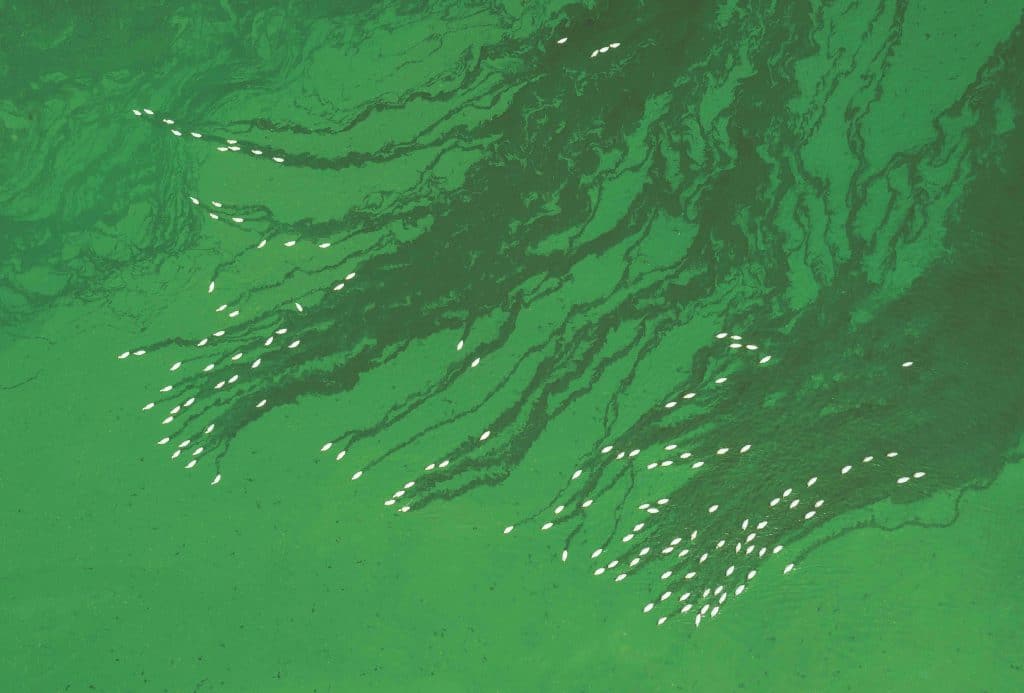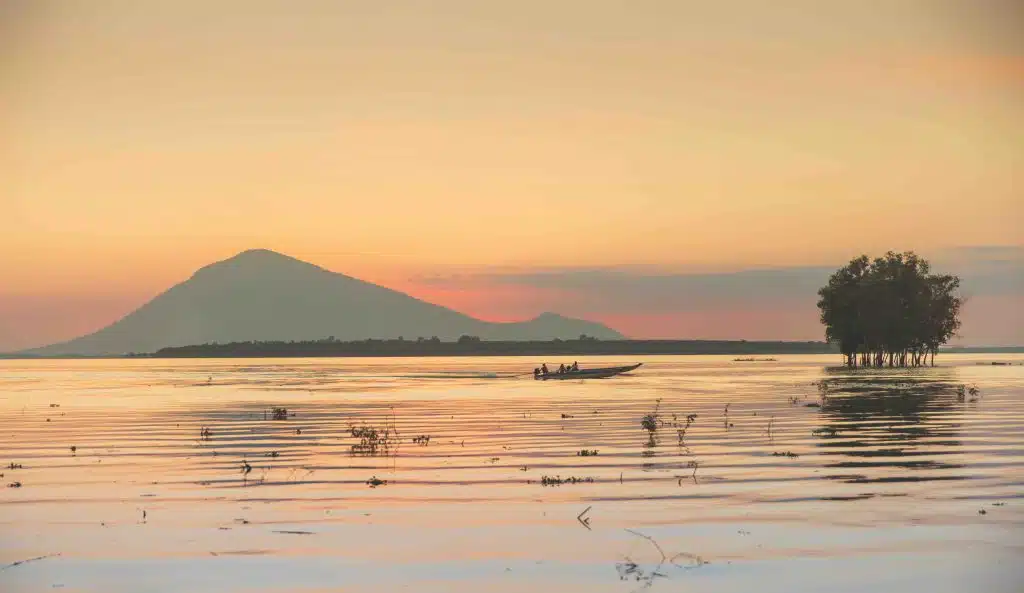Story: Truong Quy
Photos: Thanh Hai, Tuan Nguyen, Dao Canh
Since ancient times, humans have skillfully harnessed nature’s gifts to improve their lives.
From digging irrigation lakes to channeling streams for cooling barren lands, or even harnessing water power for energy, these actions have shaped human civilization. Forming an intricate network, Vietnam’s irrigation lakes have evolved into scenic tourist attractions that serve as cultural landmarks and reflect the passage of time like natural mirrors.

A sea amidst the mountains
After 1954, North Vietnam’s reconstruction efforts focused on the building of dams and reservoirs. Among the most notable projects was Suoi Hai Lake, inaugurated in 1964 at the foot of Ba Vi Mountain. Surrounded by wild forests and grasslands that draw nature-lovers, this lake covers 10 km2 and features 14 islands of varying sizes. Another gem nestled near Ba Vi Mountain is Dong Mo Lake, built a decade after Suoi Hai. Spanning 14 km2, this popular destination lies just 40 km from Hanoi, featuring the Vietnam Ethnic Groups’ Cultural Village, resorts, and entertainment venues. This modern marvel complements the contemplative atmosphere of the ancient Doai region.
Around the same time as Suoi Hai Lake, Thac Ba Lake was created as part of the first major hydroelectric project in North Vietnam. Located on the Chay River in Yen Bai province, it became a symbol of national development, attracting generations of young people eager to contribute to the nation’s progress. With a vast reservoir spanning 234 km2, it held the title of the largest hydroelectric lake in the region until the Hoa Binh Hydropower Plant began operations in 1989. Hoa Binh Lake, formed from the Da River Valley and stretching 70 km, was a landmark project. Fulfilling the poetic aspiration of “the sea will lie bewildered in the highlands, the Da River sends light in all directions” (Tieng dan Balalaika tren song Da – poem by Quang Huy), it marked a turning point in the country’s socio-economic landscape. The stable electricity generated by this project powered large-scale production and illuminated countless homes. Today, Hoa Binh Lake is a thriving tourist spot with 47 islands and over 100 eco-resorts. Visitors can enjoy boat trips to sacred temples dedicated to the Goddess of Thac Bo, admire the waterfront views, and explore hillside villages reminiscent of the iconic green-brown palette of wartime artists.

Countless other lakes have been shaped by the efforts of many generations, such as Cam Son (Bac Giang), Nui Coc (Thai Nguyen), Na Hang (Tuyen Quang), and Tuy Lai and Quan Son (Hanoi). Some, like Ban Viet Lake (Cao Bang), are smaller in size but enchant visitors with their pristine beauty, nestled amidst mountains and forests. Others have inspired poetic melodies, like Nui Coc Lake with the lyric “the sun rises green with mythical color” (Huyen thoai ho Nui Coc – Pho Duc Phuong). Some, like Ke Go Lake in Ha Tinh province, evoke the urgency of past eras via songs like “building dams and lakes, we nurture the freshwater stream” (Nguoi di xay ho Ke Go – Nguyen Van Ty), prompting many to visit this sun-drenched locale.
Gentle mirrors of the sky
Characterized by short rivers descending steeply from the Truong Son mountain range, Central Vietnam has seen humans ingeniously create large reservoirs for irrigation and agriculture. These reservoirs have also become serene and reflective destinations in this culturally rich region. Truoi Lake in Bach Ma National Park (Thua Thien Hue), Dak Mil Lake (Dak Nong), and Xuan Huong Lake and Tuyen Lam Lake (Dalat) all reflect pine trees, architectural works from bygone eras, and monasteries where evening chants echo across the rippling water.
The mighty rivers south of the Truong Son range give rise to vast lakes, most notably Tri An Lake and Dau Tieng Lake, among the largest artificial lakes in Vietnam. Established in 1984 as part of the renowned Tri An hydroelectric project on the Dong Nai River, the 323 km2 lake bordering Cat Tien National Park now provides a sanctuary for diverse and rare wildlife, including Indochinese tigers and Siamese crocodiles. Dau Tieng Lake, Vietnam’s largest irrigation reservoir at 270 km2, supplies water for agriculture in Tay Ninh and Binh Duong provinces. Situated just 70 km from Ho Chi Minh City, it has become a popular recreation spot. During the early 1980s when Tri An Lake and Dau Tieng Lake were constructed, numerous spirited songs urged people to place their faith in a bright future where “clear lake surfaces, singing in anticipation, echo along the river” (Tri An am vang mua xuan – Ton That Lap).

Modern lakes like Ta Dung in Lam Dong province and the Thanh Chuong tea islands in Nghe An continue to transcend their original purpose of providing water for irrigation. They have become tourist hot spots, drawing visitors to remote rural areas with their unique landscapes and activities. Gleaming in the morning light and ablaze at sunset, the lakes’ surfaces mirror the surrounding natural landscapes and the human spirit. They reflect the aspirations and hard work that have shaped these landscapes.
In their natural state, lakes act as mirrors, reflecting clouds, sky, trees, and mountains and captivating people with their immense ecological energy. Constantly changing with the contours of rivers and mountains, these clear waters are both mysterious and familiar to Vietnamese people, who have a deep-rooted connection to their nation’s rivers and waterways. Drifting on these expansive waters, amidst green mountains and cool breezes, travelers feel embraced by the mythical arms of nature, created by the hands of countless generations.










